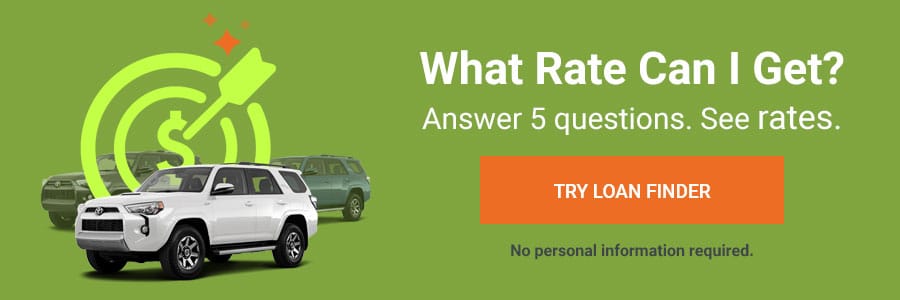“Ball-and-chain” might be a better descriptor for this type of auto loan than “balloon.”
If you’re concerned about being able to make payments on a traditional auto loan, you might be considering a balloon loan. After all, these types of loans promise lease-like payments, sometimes with no money down, even for a new car. Who wouldn’t want that?
There’s a big catch, though. You might be able to make super-low payments for the majority of your loan, but at the end, you’ll either have to make one big super-high payment, or else you could lose the car. That’s not it though — learn what else you need to know, including ways to get out of the balloon loan safely.
What Is a Balloon Payment Auto Loan?
A balloon payment loan is one that’s structured differently from other types of car loans. The lender calculates the residual value of your vehicle for a specified time period and bases the repayment schedule based on that amount.
With a balloon payment loan, you’ll make smaller monthly repayments for the life of the loan. Then, when the balloon period ends, you’ll need to make one gigantic payment, far larger than what you’ve normally been paying. This large loan payment at the end is where the “balloon” name comes from.
Residual value: the estimated value of a vehicle at the end of the balloon loan period (or lease term).
You might wonder why someone would agree to a balloon loan in the first place. The main reason is affordability. The lower monthly payments are a lot easier to make for most of the time you’re paying the loan. You also might not need to make a down payment, which is a huge plus for people who don’t have much savings for the upfront cost.
If you’re not sure whether you’d be able to afford a traditional car loan, it’s easier to put off making that big payment until later so that you can get into a car today. But in the end, you still end up paying for it one way or another.
How are payments calculated on a balloon loan?
The way the lender calculates a payment on a balloon loan also works a lot differently than with other types of loans.
To start, your lender decides on a “balloon factor.” This is the percentage of the total value of the car you’ll have to pay off for the final balloon payment. For example, if they choose a balloon factor of 50%, that means your balloon payment will be 50% of the car’s value — a huge sum to come up with all at once.
Once your lender sets your balloon payment, they’ll back-calculate from there to see what your monthly payment amount will be. The higher the balloon factor, the larger your final payment, and the smaller your monthly payments will be until then.
How is a car balloon loan different from a traditional car loan?
With normal car financing, your monthly payments are calculated so that you’ll be making the same payment until you finish paying on the loan. Your payments will be higher than the monthly payments you’ll be making on a balloon loan, but you won’t have to worry about paying off a large lump sum at the end.
In addition, you’ll steadily be increasing your equity — i.e., the portion of your car that you’ve paid off — with a traditional loan. By the time you get close to paying off your loan, you’ll already “own” most of your car.
In contrast, with a balloon loan, you might not have very much equity in your car when you get close to paying off your loan. That’s because most of your payments will be going towards interest instead of paying down the balance of your loan. This makes things difficult for you later, since you won’t have as much “wiggle room” to get out of making that big payment.
How is a car balloon loan different from car leases?
If you’re looking for affordable payments, a lease is a comparable option. It’s generally cheaper than a traditional auto loan.
A lease, however, is more like renting a car long-term. You won’t own it, not unless your lease agreement has a purchase option in the contract and you find a way to buy it in cash or with a lease buyout loan. Furthermore, you’ll also have to agree to certain restrictions in your contract, such as staying under a certain mileage or not modifying your car how you see fit.
What Are the Pros and Cons of Car Balloon Loans?
Balloon loans aren’t inherently bad. There are reasons why you’d want to choose one — but maybe many more reasons why you wouldn’t:
Pros of car balloon loans
- Smaller monthly payments: If you can’t make payments on a traditional auto loan because of cash flow issues but you still want to own a car, a balloon loan could be one way to get there.
- No down payment: Saving up for a down payment is a big reason holding many people back from getting a car. With a balloon loan, some lenders don’t require a down payment.
Cons of car balloon loans
- Not as common: Finding a lender that offers a car balloon loan isn’t as easy as with a traditional car loan or lease. You’ll have fewer options. They’re not as easy to find at credit unions, for example, and may be limited mostly to dealerships.
- Higher interest rates: Since car balloon loans are seen as riskier, some lenders will charge you even higher interest rates than what they would on a traditional car loan.
- Don’t build equity as fast: When you get close to making your last few payments you won’t own as much of your car with balloon financing as compared with a regular loan. This is because normal loans are calculated with amortization, while balloon loans are not.
- Very large lump sum payment at the end: This is the biggest kicker with balloon auto loans. Depending on the balloon factor your lender chooses, you could be paying half or more of the car’s value in one fell swoop.


Dangers of Auto Balloon Loans
The biggest thing to worry about with balloon loans is how you’re going to make that balloon payment in the end. It’s easy to put it off by telling yourself you’ll have more money later. But even if you are planning on receiving a windfall such as a promotion or an inheritance, it’s best not to count your eggs until they’ve hatched in case you don’t end up getting that cash.
Generally, one of three things happens at the end of a balloon loan:
- You make the final payment in cash
- You sell or trade in the car
- You refinance the loan
Of these, the first option — making the final car payment in cash — is the best choice, but not everyone is able to do this. And that’s where things get complicated.
If you don’t mind losing the car, you can consider selling it or trading it in. Your lender generally takes depreciation into account when setting your balloon payment amount, which means that you should be able to sell your car for the amount that it’s worth and still be able to pay off the loan without being upside down.
But if for some reason you’ve depreciated your car more than expected, such as by driving it a lot more, racking up more dents and dings than normal, or getting into car accidents, it’s possible that you might not be able to sell it for enough to cover the remaining balance on your loan. In that case, you’d still have to cover the remaining balance with a lump sum payment anyways.
You can consider refinancing the loan, but this assumes that you’ll be in a financial position with a good credit score where you can refinance at the end of the loan term. There’s a lot that can happen between now and then that could make it more difficult or impossible to refinance your loan, sell your car, or come up with the balloon payment in cash, and that’s the biggest danger of car balloon loans.
Can You Refinance an Auto Balloon Loan?
Yes, if you’re able to meet your new lender’s approval requirements for borrowers.
Keep in mind, though, that this also means you’re essentially taking out two loans for the same car. You’ve already paid a bunch of interest payments on the balloon loan, and now you’ll be required to pay interest yet again. It means you get to keep your car, but it also means that it’s a very expensive way to finance a car purchase.
On the other hand, since you likely have paid down some of the principal on your car already, you probably won’t need to take out nearly as big of a loan as before, or for as long of a loan term. In fact, if you shop around for the best rates, you might even be able to find a much more affordable loan than you had in the first place.
About The Author
RateGenius
A better way to refinance your auto loan. RateGenius works with 150+ lenders nationwide to help you save money on your car payments. Since 1999, we've helped customers find the most competitive interest rate to refinance their loans on cars, trucks, and SUVs. www.rategenius.com
;)



